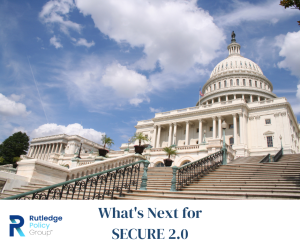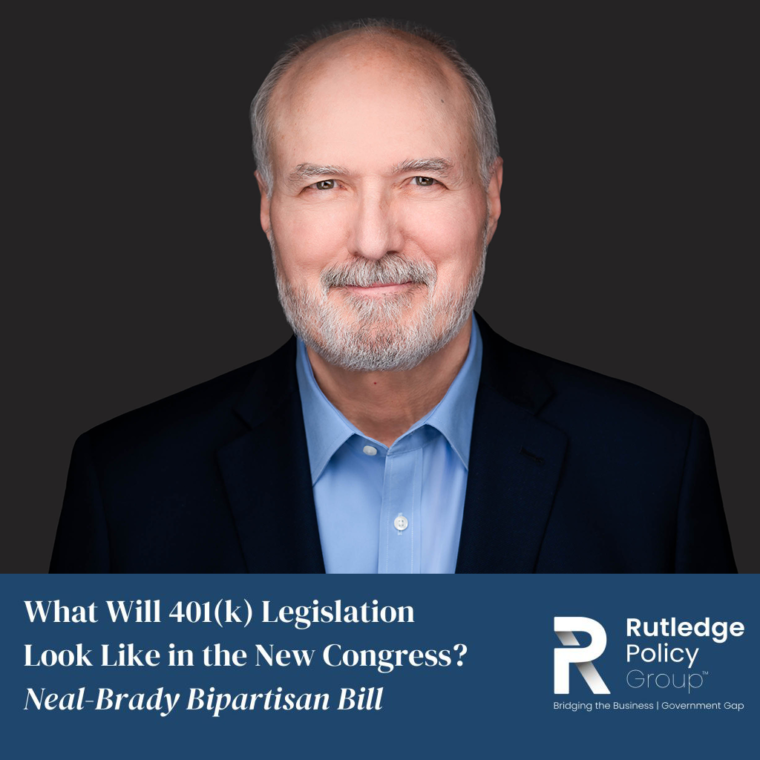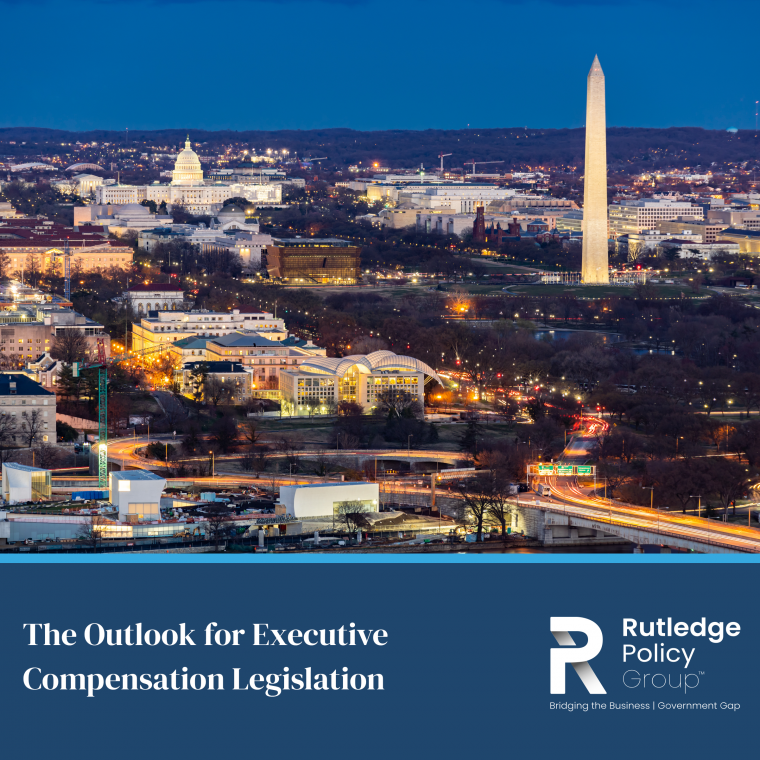 At the end of March 2022, the Securing a Strong Retirement Act of 2022 was passed by the US House of Representatives by an overwhelming 414-to-5 vote.
At the end of March 2022, the Securing a Strong Retirement Act of 2022 was passed by the US House of Representatives by an overwhelming 414-to-5 vote.
Commonly referred to as “SECURE 2.0,” since it builds on the last major piece of retirement legislation, the SECURE Act (formally known as Securing a Strong Retirement Act of 2019), the House bill addresses four major areas:
- Increasing access to retirement saving at work. For example, by making it more affordable for smaller employers to offer plans through greater tax credits for start-up costs and extending the ability to set up multiple employer and pooled employer plans to 403(b)s.
- Expanding participation. For example, through auto enroll, expanded coverage for part-time workers, and allowing employers to match student loan repayments with contributions to their retirement plans. SECURE 2.0 would also help lower-income households save for retirement by offering extra tax savings through a streamlined and increased Saver’s Tax Credit.
- Enhancing accumulation. For example, through auto escalation of contributions. The House version of SECURE 2.0 would standardize a 1% contribution increase each year, up to 10%. Employees would be able to opt out if they wished. SECURE 2.0 also helps those getting ready to retire accumulate more with increases in catch-up contributions for those aged 62, 63 and 64.
- Stretching out savings over lifespans. For example, by gradually increasing the age at which people must take required minimum distributions (RMDs) to age 75 and even eliminating RMDs for those with less than $100,000 in savings. In addition, the House’s SECURE 2.0 encourages the purchase of annuities as another source of lifetime income by increasing the amount of retirement savings people can put in annuity contracts and easing RMD requirements for annuity options.
Senate Developments
As SECURE 2.0 was moving through the House, the Senate was working on its own version of retirement legislation. The leading Senate bill is the Retirement Security Savings Act of 2021 which, since it was sponsored by Senators Ben Cardin (D-MD) and Rob Portman (R-OH), is known as Cardin-Portman.
Cardin-Portman addresses the same four areas as SECURE 2.0, but it takes some different approaches to the same policy goals. For example, Cardin-Portman:
- Directs the Department of the Treasury to facilitate auto enrollment and auto escalation through guidance, while the House’s SECURE 2.0 mandates those features for some plans.
- Raises the mandatory age for RMDs immediately to age 75, instead of raising it gradually over some years as SECURE 2.0 does.
- Asks the Treasury Department to issue guidance on the purchase of annuities for those seeking to increase income in retirement.
In addition to issues of “mandate” (House version of SECURE 2.0) versus “no mandate” (Cardin-Portman), budget considerations also account for differences in the House and Senate bills. In particular, although some House members wanted SECURE 2.0 to further expand the Saver’s Tax Credit to people who don’t have a tax liability – effectively a “government match” to their contributions – it didn’t make its way into the House’s SECURE 2.0, reportedly because it would result in significant revenue loss.
Instead, SECURE 2.0 would make the Saver’s Tax Credit available to taxpayers at higher income levels than current law and would set the applicable percentage of the credit at 50%, rather than having the percentage decline as income increases. The Senate is now debating whether the Cardin-Portman expanded Saver’s Tax Credit should be in the final legislation or if it should keep the somewhat more restrictive version that’s in SECURE 2.0.
In addition, a hot new issue has emerged in the Senate, which we didn’t see in SECURE 2.0: provision for emergency savings, in recognition that a lot of younger and lower-income employees don’t start saving for retirement at work because they think it’s more important to set aside funds for emergency purposes.
One bill working its way through the Senate would allow employees to place up to $2,500 per year into an emergency savings account (a “sidecar” account to a 401(k)), with an employer match. Another Senate bill proposes to simplify the hardship distribution rules for employer-sponsored plans so that employees could access up to $1,000 per year from their plans with minimal documentation.
Timing of Senate Legislation
Front and center, because retirement legislation focuses on two areas, there are two Senate committees who have to mark up its version of retirement legislation (as is the case in the House): the Committee on Health, Education, Labor & Pensions (or HELP, overseeing labor-related issues) and the Senate Finance Committee (overseeing tax issues – and the bulk of retirement legislation is tax-related). Both committees are aiming to have their markups completed and their respective bills voted out in June. The HELP Committee markup is scheduled for June 14. The Finance Committee markup date has not been announced.
Once the respective committee markups have been voted on, as in the House, the two versions have to be stitched together into one bill. The timing for this is probably July or over the August recess, at the earliest.
In other words, there’s a hope – and an opportunity – that the Senate bill is voted on before the November mid-term elections.
Getting to the Finish Line
It’s likely that we’ll see differences between the Senate and House versions of SECURE 2.0. In order to finalize the legislation, both the House and Senate versions must be reconciled into one bill. This process could take place through a traditional conference between the House and Senate; but in this era, usually the respective leadership offices convene more informally to resolve differences in legislation. This approach is known as the “Eight Corners” negotiation, where the Chairs and Ranking Members of the four Congressional Committees that markup up the legislation work out the details of the final bill.
Whatever way the reconciliation process happens, there will be a lot of “horse trading” between the House and Senate and we’ll find out who is most vested in seeing individual provisions of the House and Senate bills included in the final bill.
Once the two houses of Congress agree on the final reconciled bill, the Joint Committee on Taxation and the Congressional Budget Office will have to “score” its costs. Then the most likely next step is that the final bill becomes part of a larger piece of omnibus legislation going through the House, which, in turn, will be voted on by the Senate (this is what happened with the SECURE Act). If approved, the final bill then goes to the President for his signature.
Of course, the real question isn’t what will happen to enact SECURE 2.0 into law, but when it will happen. Between the usual Congressional recesses and the mid-term elections, if SECURE 2.0 is enacted into law in 2022, it most likely will be after the mid-term elections.
But even if we miss the year-end timeline and SECURE 2.0 rolls over into the next Congress, it’s still likely to move forward, regardless of which party controls the agenda in the House and Senate. Retirement legislation continues to enjoy strong bipartisan support. And historically, retirement legislation has been as tenacious as it is bipartisan. In other words, even if we can’t be certain when we’ll get to the finish line, we can be confident from history that we will get there.
No Time to Waste
We will have new retirement legislation, sooner rather than later. That means for companies in the retirement industry, now is the time to ask Congress for what you think is important to include in the final bill.
And no matter the legislation’s final form, those in the retirement and investment advisory industries should get ready now for a larger, and more diverse, group of people saving for retirement. Companies can’t afford to postpone their preparations and get caught short once SECURE 2.0 gets enacted into law.
Contact us today to schedule a complimentary consultation to learn how Rutledge Policy Group can be of help.

